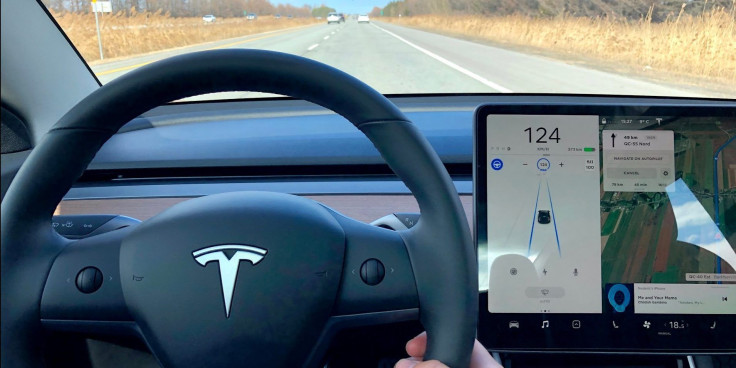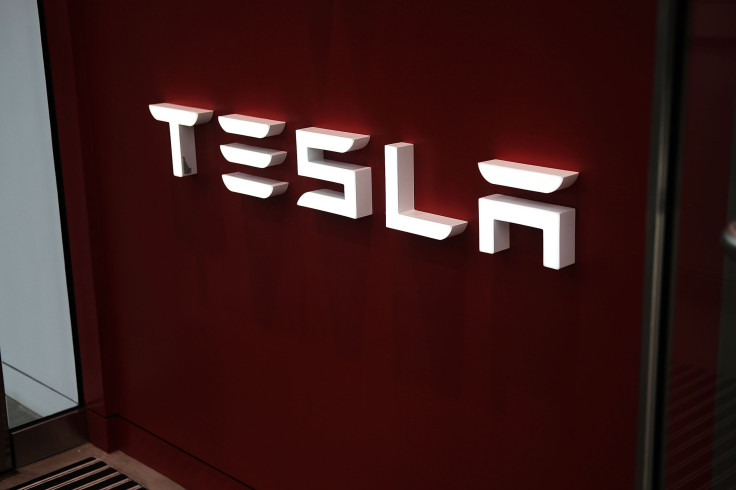Tesla Declares War On Waymo's Lidar Technology

Tesla (NASDAQ:TSLA) CEO Elon Musk threw tons of shade this week at Waymo, Alphabet's (NASDAQ:GOOG) (NASDAQ:GOOGL) self-driving car unit. The issue he raises could make all the difference in the race to autonomous vehicle supremacy.
Speaking at the Tesla's recent Autonomy Day event, Musk called Waymo's lidar technology "friggin' stupid" and "a crutch." Lidar sensors are used by virtually every company attempting to build an autonomous car today except Tesla. Should Musk be proven right on this issue, Tesla would have a material advantage over its rivals in the coming age of driverless vehicles.
That would be hugely consequential for not only Tesla investors, but also shareholders in Alphabet, NVIDIA, and other companies that are looking toward autonomous driving as a catalyst for future growth.
With that in mind, let's dissect how lidar works, how Tesla's approach is different, and which side may come out the winner in this debate.
Lidar explained
Lidar, an acronym for Light Detection and Ranging, illuminates its surroundings with pulsed lasers, then uses sensors that can detect the pulse reflections to map objects up to about 200 meters away. If you've seen a self-driving car near you -- likely in California or Arizona -- and you've noticed the large hardware stack on the vehicle's roof, that's the lidar sensor array.
While lidar takes care of most of the heavy lifting for Waymo, all autonomous vehicle prototypes today use a combination of sensors to map objects around them. That's because lidar has some detection issues. These include:
- Lidar doesn't work as well in rainy or dusty environments, as particles can interfere with the light wavelengths it monitors (though it supposedly works better than current cameras in low light conditions).
- A lidar system is not as strong when it comes to detecting objects that are very close.
- Lidar can't distinguish between colors.
- Lidar sensors consume a lot of power.
Finally, lidar has traditionally been very expensive -- the sensors required to outfit just one vehicle cost upwards of $75,000. However, Waymo says its team has cut the cost of its proprietary sensors down by 90% to only about $7,500. Waymo recently announced it will be selling its proprietary lidar sensors to select partners in the fields of robotics, security, and agricultural technology -- though not to its self-driving competitors.
How Tesla's autonomous system is different
In contrast, Tesla's autonomous driving system depends on a combination of radar, ultrasonic, and passive visual sensors (cameras) to map its surroundings. Of the three, Tesla most emphasizes its next-gen cameras, which work in combination with its own neural network. That neural network is powered by Tesla's proprietary computer chip, which was also unveiled at the Autonomy Day event.

Musk and Senior Director of Artificial Intelligence Andrej Karparthy both said that, with the power of AI and massive data sets, cameras can be trained to work better than lidar sensors. Karparthy made the point that lidar would have trouble distinguishing between a plastic bag and a rubber tire at a similar distance. On the other hand, cameras, combined with a supercomputer accessing a massive data set, can train Tesla's autonomous vehicle system to distinguish between types of objects.
Training a computer to do this task accurately takes a lot of work, but that's where Musk claims Tesla has another advantage. All recently sold Teslas are constantly collecting visual data when they are on the road. Musk said, "Whether autopilot is on or off, the network is being trained. Every mile that's driven for the car that's (equipped with) hardware 2 or above is training the network."
Them's fighting words
Curiously, Alphabet itself does a lot of work on this type of visual AI within Google. That leads one to wonder why Waymo is so focused on lidar technology over camera-based sensors if Musk's claims about the latter's superiority were true. It's possible that since Waymo doesn't have as many cars on the road as Tesla, it isn't collecting as much data with which to train its neural engine. However, Waymo's self-driving vehicles have racked up more miles on the road than any of its pure self-driving peers, and many more in simulation. If cameras and AI were the way to go, one would think Waymo would have recognized that and switched over to the superior, but tougher, technology. After all, Alphabet isn't shy about taking its time with its "Other Bets." Still, Musk asserts that lidar is a "crutch."
Musk made a number of other bold statements on Autonomy Day, including an assertion that Tesla will have a million robotaxis on the road sometime in 2020. That's right -- Musk basically said that Tesla will become an autonomous-vehicle Uber within a year and a half.
Given the regulatory hurdles around self-driving and the other factors involved in scaling up a ride-hailing business, let's just say I'm skeptical that his prediction is totally accurate. In fact, most analysts that attended the event were pretty skeptical about the whole presentation, especially that part.
Nevertheless, if Musk proves right about which autonomous vehicle vision technology is the best, Tesla is poised to be a huge winner, since it's following a technological path that no other autonomous vehicle company is on.
This article originally appeared in the Motley Fool.
Suzanne Frey, an executive at Alphabet, is a member of The Motley Fool's board of directors. Billy Duberstein owns shares of Alphabet (C shares) and NVIDIA. His clients may own shares of the companies mentioned. The Motley Fool owns shares of and recommends Alphabet (A shares), Alphabet (C shares), NVIDIA, and Tesla. The Motley Fool has a disclosure policy.





















